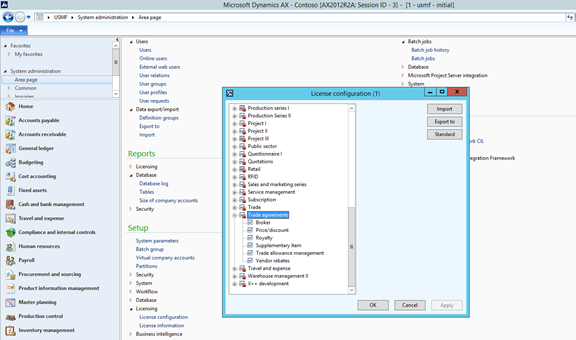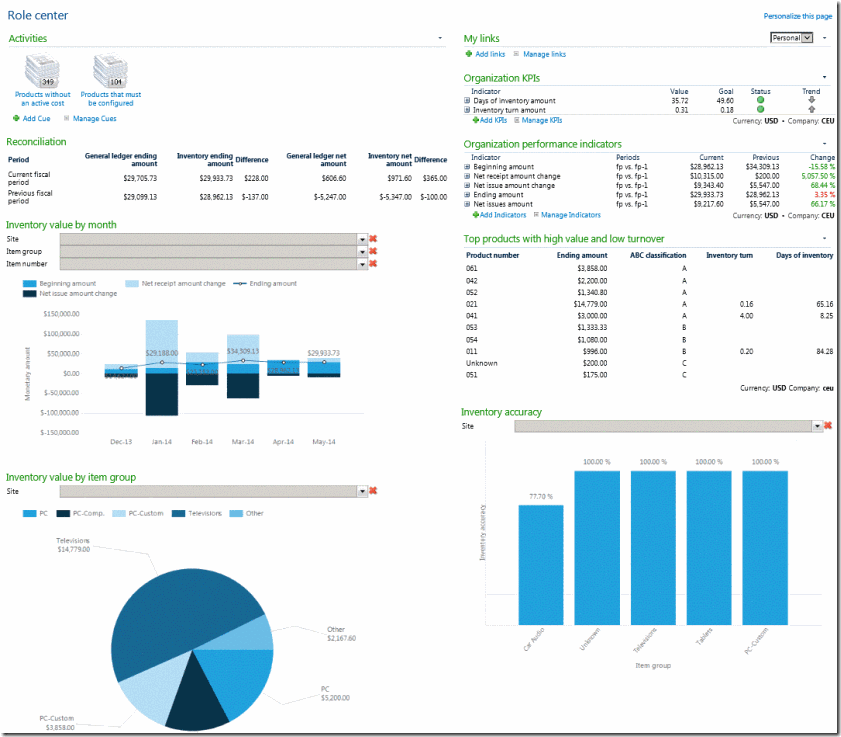

- MICROSOFT DYNAMICS AX 2012 UPDATE
- MICROSOFT DYNAMICS AX 2012 SERIES
In this case, we will be using the population data from Wikipedia and abbreviation data from a website.
MICROSOFT DYNAMICS AX 2012 UPDATE
One of the key ways to explore new data sets is to find information that is external that can be used for summary purposes or to update the data. The data is added to your workbook in a new tab. Right-click the selection and then click Remove Other Columns.
Remove columns that aren’t needed – Select the CustInvoiceTrans_TaxGroup and CustInvoiceTrans_LineAmount columns. Remove the transactions that are not subject to tax – click the CustInvoiceTrans_TaxGroup column drop-down and clear No-Tax. Isolate transactions in US Dollars – click the CustInvoiceJour_Currenc圜ode column drop-down and select only USD. Click Edit to use Power Query to filter the data. This also assumes you have not reconfigured your AX client to a different port than the 8101. NOTE: The previous method was to use Server name this is as not reliable. Click From Other Sources in the Get External Data. Please see my earlier article on AX 2012 Power Pivot for instructions to create an Odata feed if none exists using Document Management. For this process, we will connect to an existing query called CustInvoiceSRS that has a custom filter called USSalesUSMF2011. 
We will need to get our data from AX 2012 and in this case, we will be using data from an OData data source.

The purpose of this is to support both groups of implementations and to transition you quickly to the new Dynamics 365 for Finance and Operations, Enterprise edition tools. Each time we are modeling the same tools but using different connections and a bit different data.
MICROSOFT DYNAMICS AX 2012 SERIES
Two posts of the series are on Dynamics AX 2012 and two are on Microsoft Dynamics 365 for Finance and Operations, Enterprise edition. Parts one and two worked with Power Pivot. This is part three of a four-part series on this topic. As a bonus, we will also render this information in Power BI. In this exercise we will be extracting the data from document management using OData, importing external data, merging the data, creating a calculated column, and finally, displaying using Power View. This article is an update to an earlier TechNet series on the same topic I have updated for the tools and menus that you see today. For our purposes, we will be using data that we gather from a variety of sources that we transform using Power Query and then render in Power View using Microsoft Excel 2013.
Name: This represents the Operating unit Name (e.g.One of the key legacy support items is extracting data from Microsoft Dynamics AX 2012. Value: This represents the Operating Unit ID (e.g. Key: This is foreign key to the Operating Unit RecId field (e.g. The following example shows the financial dimension backing entity for departments which are stored in the table OMOperatingUnit The DimAttribute financial dimension backing entities have a key, value and name field. The NameAttribute field on the DimensionAttribute record stores the field in the backing entity view that stores the NAME of the financial dimension, for example “IT Department”. The DimensionAttribute record contains a ValueAttibute field, which is the field id in the backing entity view that stores the VALUE of the financial dimension, this is a natural key, for example a department ID (e.g. The DimensionAttribute table is used to find the table that contains the financial dimension, the DimensionAttributeValue table is used to find the specific record in that table. This view can then be used to display information about the financial dimension. The backing entity is usually a view in the AOT, starting with DimAttribute. The DimensionDefaultingControllerBase class is used to find the backing entity record. This stores the object ID of the view or tabled used as backing entity, e.g. 
The DimensionAttribute table is used, this stores information so we can understand the TYPE of financial dimension. EntityInstance is a surrogate key to the exact record we wish to display. This is usually linked via a surrogate key, e.g. The DimensionAttributeValue table is used, this stores a link to the VALUE of the financial dimension we want to display, for example a department or cost center number. The DimensionAttributeValueSetStorage class is used to iterate through all the financial dimensions in the DefaultDimension.








 0 kommentar(er)
0 kommentar(er)
